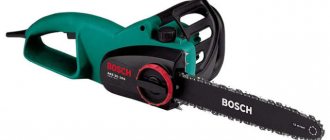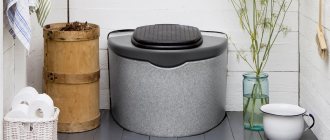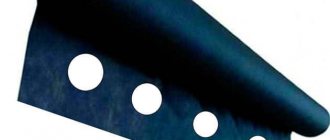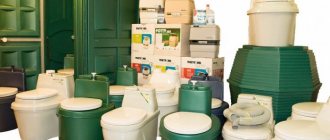Drip irrigation on a personal plot not only saves water resources, but also significantly increases productivity. It ensures timely supply of moisture directly to the roots of plants. At the same time, the leaves do not get burned due to the ingress of water drops, the spread of phytodiseases is reduced, and soil erosion is prevented. Among other things, such a system can work on its own, without our presence. It is always tempting to replace difficult and painstaking work with relaxation!
Having realized the usefulness of this device, it doesn’t hurt to properly understand its structure. So that we can then make the right choice in favor of a system that is suitable specifically for our personal plot! So let's get started...
What is it and why is it needed?
The tape is a long, soft plastic hose with holes drilled in sequence along its entire length .
On more complex devices, the water supply holes are equipped with special regulators - emitters. Drip tape for irrigation is part of an irrigation system for irrigating parks, orchards, vegetable fields, and greenhouses. The device can be used equally effectively to provide water for crop areas of 5-10 acres to several hectares.
Conclusions about the above information
Thus, drip irrigation is the most popular, modern option for watering agricultural crops, flower beds, and fruit trees. There are different types of such systems. Each of them has its own parameters, strengths and weaknesses. When equipping drip irrigation: the distance between drip tapes and droppers must be chosen wisely. The quality of irrigation, and therefore the condition of crops, depends on this. It is also important to install the system correctly. It is better to give preference to products from well-known, trusted companies. After all, an installation made of high-quality material will last properly and for a long time.
How is it structured, how does it work?
The high efficiency of drip tape for irrigation is achieved by the simplicity of its design. It consists of the following elements:
Filter. Installed on the water inlet side. Used to clean it and protect the entire system from suspended particles.- Labyrinth. It is created from the drip tape itself. Due to it, water pressure is stabilized.
- Water container.
- A system of holes necessary to supply water directly to the planting sites.
- Connecting fittings. Used to connect several highways into a single network.
The drip tape is connected to a container or pool of water. Due to the pump, water flows inside, purified from large particles of dirt using an inlet filter. After cleaning, the water enters the labyrinth, which stabilizes the water pressure, and from it into the hose, where it comes out through many holes.
The same pressure throughout the system allows the water to be dosed equally at the beginning, middle and end of the irrigation system. It is possible to further adjust the dosage in certain areas. This is done by adjusting the opening of the holes.
Other (optional) system elements
If you are going to also apply fertilizers to the beds using drip irrigation, you will definitely need a Venturi injector or another device that mixes mineral fertilizer with water. You can read more about them and about fertigation itself here. Full automation is useful if the irrigation area is large. To do this, you will need to purchase a controller or automation unit. The controller can be installed only for one irrigation zone, that is, crops planted in this part should absorb approximately the same amount of liquid. But the automation unit is capable of controlling several zones with different levels of moisture demand at once. There are enough models of both devices, so you should choose them based solely on their power and your financial capabilities. You can modernize drip irrigation with the help of one more device – a rain sensor. Monitoring the level of soil moisture, he either supplies liquid if necessary, or makes sure that the system does not turn on at all. Of course, such a device is only suitable for open ground.
Don’t know anything about what drip irrigation is, which one to choose? Reviews say that purchased systems are sold as a set and you do not have to purchase each part separately, taking into account many different factors and features of each of them. But do not forget that it is possible to do it on your own, because there is nothing complicated about it, and it is not necessary to purchase sensors and controllers. The simplest gravity-flow system of a barrel and hoses, as well as a completely ready-made one, works equally well. The only difference is how much irrigation automation you require.
Kinds
There are 3 main types of drip tapes for soil irrigation. Each type has a special design, operating principle and method of installation on site.
Slotted
In this version, the pressure stabilizing labyrinth is already built into the hose . For watering, the hose is equipped with many holes made in the form of thin slits.
The main advantage of such a system is great water savings, which is achieved through uniform supply throughout the entire area.
The main disadvantage of this type of drip irrigation is the high requirements for water purification. The cracks often become clogged with unfiltered particles.
Emitter
This type of drip tape is more advanced. Each hole is equipped with an emitter - pressure regulator . The emitter is a flat strip of plastic with a labyrinth on its surface. This system allows you to adjust the pressure of each hole or area.
Emitter systems significantly reduce water consumption during irrigation and are more practical. The disadvantage is the higher price compared to slot devices.
Labyrinth
The labyrinth system is a hose in which a zigzag channel is made along its entire length . This channel is designed to regulate water pressure. The labyrinth along the entire length of the hose also significantly increases the temperature of the flowing water.
The main advantage of such a tape is its low cost and the ability to warm up the contents. Disadvantages include low strength and difficulty during installation.
Type comparison
The described types of drip tapes are used for watering various types of plants in areas of different sizes. There are also differences in installation and use. All these nuances will be described in a separate table:
| Characteristic | Labyrinth | Slotted | Emitter |
| Presence of a labyrinth | + | + | + |
| Water supply regulator | — | — | + |
| Water flow control | — | — | + |
| Water filtration requirements | + | + | — |
| Uniform water supply | — | + | + |
| Fertilizer supply | — | — | + |
| Life time | — | + | + |
| Overall quality | — | + | + |
Labyrinth-type tapes are suitable for one-year use . They are very sensitive to ultraviolet radiation. It is better to lay such devices on a flat surface without kinks. It is also recommended to install fasteners, as the hose bends and the outlets may not be positioned accurately.
Slot systems are used on areas of up to 1 hectare or more. But it is necessary to especially take into account the presence of a filter. These watering devices do not require attachment to the ground; they can simply be sprinkled with soil at a distance of several meters.
Emitter varieties do not require a filter. Through such a device you can even fertilize with liquid fertilizers. After this, be sure to clean the entire system with clean water.
The video will tell you about the types of drip tapes:
Criteria for selecting strip irrigation
It is not enough to simply purchase and install an irrigation system on your property. It is very important to choose it correctly, guided by several nuances.
By thickness
The thickness of the material from which the tape is made is the key to durability. But it also affects the overall cost of a drip irrigation system. There are the following types of tapes based on thickness:
- Mil5 – equivalent to 0.125 mm thickness . Is the thinnest. Can only be used for one season.
- Mil6 – 0.15 mm . Suitable for installation on soils of normal hardness.
- Mil8 – 0.2 mm . Can be used for several seasons if used very carefully.
- Mil10 – 0.25 mm . Resistant to ultraviolet radiation and minor damage. Can be used for several seasons on hard, rocky and clayey areas.
- Mil15 – 0.375 mm . The most durable in thickness and the most expensive. Resistant to moderate mechanical damage. Suitable for installation on rocky areas.
When choosing a tape, taking into account the wall thickness, it is necessary to take into account the number of seasons it will be used. For small greenhouses, a medium tape, such as Mil8 or higher, is suitable.
By diameter
The resistance to water supply under pressure depends on the diameter of the line. There are only 2 models by diameter:
16 mm .
Suitable for use with a total system length of up to 250 m. If this length is exceeded, the pressure and uniformity of irrigation will be affected.- 22 mm . Tape of this diameter is rarely used. Its main advantage is maintaining uniform water pressure over a total system length of more than 450 m.
If water is supplied by a pump, it is necessary to take into account its power and, based on this parameter, select a tape based on its diameter.
By lenght
Drip tapes have a minimum length of 50 m . At this length, a belt with a Mil8 wall thickness and an internal diameter of 16 mm will be suitable. A longer irrigation system, into which water is supplied under pressure, should consist of a belt with a diameter of 16-22 mm, with a wall thickness of Mil 10-12.
By working pressure
The operating pressure of irrigation tapes varies from 0.3 to 1 bar. It is worth taking into account the pump power and overall length.
If the drip tape will be connected without a pump, it is necessary to install a container with water at a height of 1-1.5 m and connect the system to it. This height will create a pressure of approximately 0.2 Bar.
Step
The location of individual crops on the site depends on the belt pitch. If the tape is purchased after planting, the step is taken into account from the location of the seedlings. If the area is just being prepared for sowing, seedlings should be planted based on the distance between the exit holes.
Modern watering tapes are produced with the following steps:
For plants that were sown close to each other, a tape with a pitch of 10, 15, 20 cm is suitable.
Tapes with this pitch are used for installation on sandy soils. The close location of the outlet openings contributes to high water consumption.- 30 cm. Tapes with this pitch are used for irrigating medium-hard soils.
- 40 cm. Used for irrigating fruit trees. This system consumes less water.
It is also necessary to take into account the step when forming a complex system with a total length of more than 300 m. With such a length and complexity, taking into account water pressure is very important.
Manufacturers
The quality of the tape, its performance and stability depend on the manufacturer. When choosing, you should take this nuance into account. The most popular manufacturers of quality tapes include the following companies:
- "Innovation Center" . Produces tape under the Green River brand. The product is characterized by high reliability of the hose material. Also, the company independently produces devices with different pitches of the internal labyrinth. Belts of this model are available in lengths from 100 to 3000 m, with different thicknesses and diameters.
- "The New Age of Agri-Technology" . The most famous model of this company is Neo-Drip. Available in sizes from 50 to 3000 m. The main feature of the product is its resistance to chemicals and ultraviolet radiation. Additionally, each product is equipped with a complex labyrinth that maintains the same pressure.
- "PESTAN" . Produces slotted tape under the HIRRO TAPE brand. Products are available in a thickness range of Mil 8-24. All products are made using seamless technology. Depending on the thickness, it can be mounted on stone and clay areas. Suitable for installation with tilt angles up to 18 degrees.
- "NETAFIM " Company from Israel. Produces tape lengths from 50 to 4500 m. A special feature is the use of a seamless production method, resistance to chemicals and ultraviolet radiation. The belts from this company have a thickness of Mil 8-12.
- "AquaPlus " The Ukrainian manufacturer uses seamless manufacturing technology. The products are produced with a diameter of 16 mm, lengths from 300 to 2300 m. A special feature of the tapes is resistance to mechanical stress, pressure up to 1 bar, high flexibility without fractures or twisting.
All these manufacturers produce the highest quality products in the middle and budget price categories.
Other factors
In addition to the described criteria for choosing a drip tape, it is also worth considering the water consumption when watering. The flow rate is affected by the number and pitch of the outlet holes. The following types of these devices exist:
- Universal , which consume from 1 to 1.5 liters of water per hour. Tapes of such models are suitable for irrigating any plants.
- For double row irrigation . Consumes 2-3.8 liters per hour. Such tapes are used for irrigating particularly demanding crops in arid regions.
- Professional . The consumption of these devices is minimal: from 0.6 to 1 liter. Such tapes are used in complex irrigation systems.
When choosing, you should additionally take into account the resistance of the material to sunlight. This parameter is especially important for arid regions. A product that deteriorates from ultraviolet radiation is not suitable for use for several seasons.
The video will show you how to choose drip tape:
Emitter drip tape
We recommend reading our other articles
- Recipes for adjika from plums
- Temp breed ducks
- Black raspberry and its features
- White spots on eggplant seedlings
Emitter tape for drip irrigation is the most modern type and differs from other options in that it has separate, flattened droppers. They are built into the tape at a certain distance from each other. The tape is resistant to contamination thanks to special turbulent flows that clean the dropper.
Photo of Neo Drip emitter drip tape
Flaws:
- High price.
- If unwinding or installing incorrectly, the tape can be damaged.
The most popular emitter tapes are Neo Drip, Hirro Drip, and Pestan.
Rating of the best products on the market
When choosing, you should also take into account the ability of the tapes to irrigate open and closed areas, that is, versatility. In the rating of universal irrigation systems, the following models are considered the best.
Green Helper GN-023N
This model is produced in lengths starting from 100 meters . There are 64 emitters or slits per length. The model is available in slot and emitter types. Suitable for use on open hard ground or in a greenhouse. Also, corrosion resistance allows the tape to be used when installed directly into the ground.
Among the advantages are the high quality of the material, resistance to creases and twisting. The main disadvantage is the high cost. The price of a standard 100 reel starts from 3,500 rubles.
Presto-PS Blue Line
This model of slotted tape has a standard length of 100 m . Made from black propylene, UV resistant. Universal class products. Available with slot spacing of 10, 20, 30 cm. Suitable for external and underground installation.
The advantage of the model is its resistance to pressure of 1.8 Bar. The main disadvantage is the non-standard diameter. The end of the hose is very difficult to pull onto standard adapters. The price of a standard reel of this model starts from 5,000 rubles.
BOUTTE
This model is available in lengths from 100 m, with a diameter of 16 mm . It has 3 options for the location of emitters: 10, 20, 30 cm. Produced from black polyethylene, resistant to chemical reagents. The main feature is versatility.
The product can be used when connected to a pump, container or water tap. The main disadvantage is the need for frequent fastening; the hose twists over long distances. The price of products starts from 750 rubles.
How to do it yourself?
Many gardeners place more trust in self-made irrigation systems. You can make drip tape for irrigation yourself.
What will you need?
To make your own ribbon you will need:
- plastic pipes with a diameter of 20 mm, their length should take into account all rows of beds;
- connecting plastic corners for pipes;
- ball valve;
- plastic plugs;
- water container.
The tools you will need are a drill with a drill bit with a diameter of 1-1.5 mm and a soldering iron for plastic pipes.
Manufacturing process
The manufacture of a drip irrigation system begins with marking the site. It is necessary to measure the length of each row and the distance between plants. Further:
Connect the pipes together using corners, according to the site diagram.- Taking into account the predetermined distance between the plants, drill holes in the pipe along the entire length, for example 40 cm.
- Seal the ends of the pipes with plastic plugs.
- Connect an inlet pipe with a ball valve to the system.
- Connect the end of the pipe to a water container.
This is the simplest drip irrigation system. It can be supplemented with regular medical droppers. Each dropper will need to be inserted into a hole. This approach will allow you to regulate water flow in each area.
How to install or lay it correctly?
It is very easy to install the finished drip tape yourself. This is done as follows:
- Connect the outlet pipe to the tap or container with a ball valve.
- Attach a filter to the tap outlet.
- Attach a pipe to the filter outlet, perpendicular to the ground.
- Make holes in this pipe for the connectors. The holes should be exactly parallel to each row of beds.
- Connect the connectors to the pipe.
- Apply ribbons to the connectors and connect them.
- Plug the ends of the hoses.
- Lay the tapes along the entire length of the beds, taking into account the distance between the plants and the emitters.
- Secure the tapes with fasteners or sprinkle with soil.
- Flush the system.
It is necessary to lay the tape so that all holes are directed straight up.
Operating principle
Water enters the control channel from the pipe, passing through a large number of filter holes. The water is then fed into a labyrinth channel, through which the water flow is regulated before it reaches the outlets. The turbulent emitter has a length greater than that of the labyrinth channel.
This design causes less clogging and distributes irrigation water more evenly than other drip tape designs. Moreover, its location on the ground or under it does not affect the quality of work at all. The water outlet slot is made mechanically (no material was removed), so the water is distributed evenly. The tape can be used subsoil, in this case blocking by external material is eliminated.
How to clean?
During operation, the belt collects deposits in its cavity. They also accumulate in the outlet openings.
Washing is carried out as follows:
- open all the plugs at the ends of the tapes;
- turn on the water at a pressure of 0.6-1 m per second.
This performs a general flushing of the system. You can also regularly clean the holes to remove salts and deposits. To do this, use a hydrogen peroxide solution.
The solution is prepared from a ratio of 1 to 40 . The mixture can be cleaned only after the plants have been fertilized with copper-containing products and not earlier than 24 hours.
Rules of care
Proper maintenance of a drip irrigation system is necessary from the start of operation.
It is very important to have a filter and periodically replace or clean it. It is also necessary to monitor water quality.
When irrigating with fertilizers, the entire system must be flushed for 1-2 hours under a pressure of 0.7 Bar . It is also important to monitor the system when working on site. Do not step on or mechanically impact the belts.
Watering timer
The most important component of the system that automates the watering process is the controller or timer. The latter specifies only the frequency and duration of irrigation. Timers can be electromechanical or electrical. The controller can set an irrigation program, which takes into account the pressure in the system, sets daily watering cycles and takes into account humidity and temperature.
True, the more advanced the drip irrigation system, the more expensive it will cost, but those who have tried drip irrigation speak mostly positively about it - the cost is completely justified.











